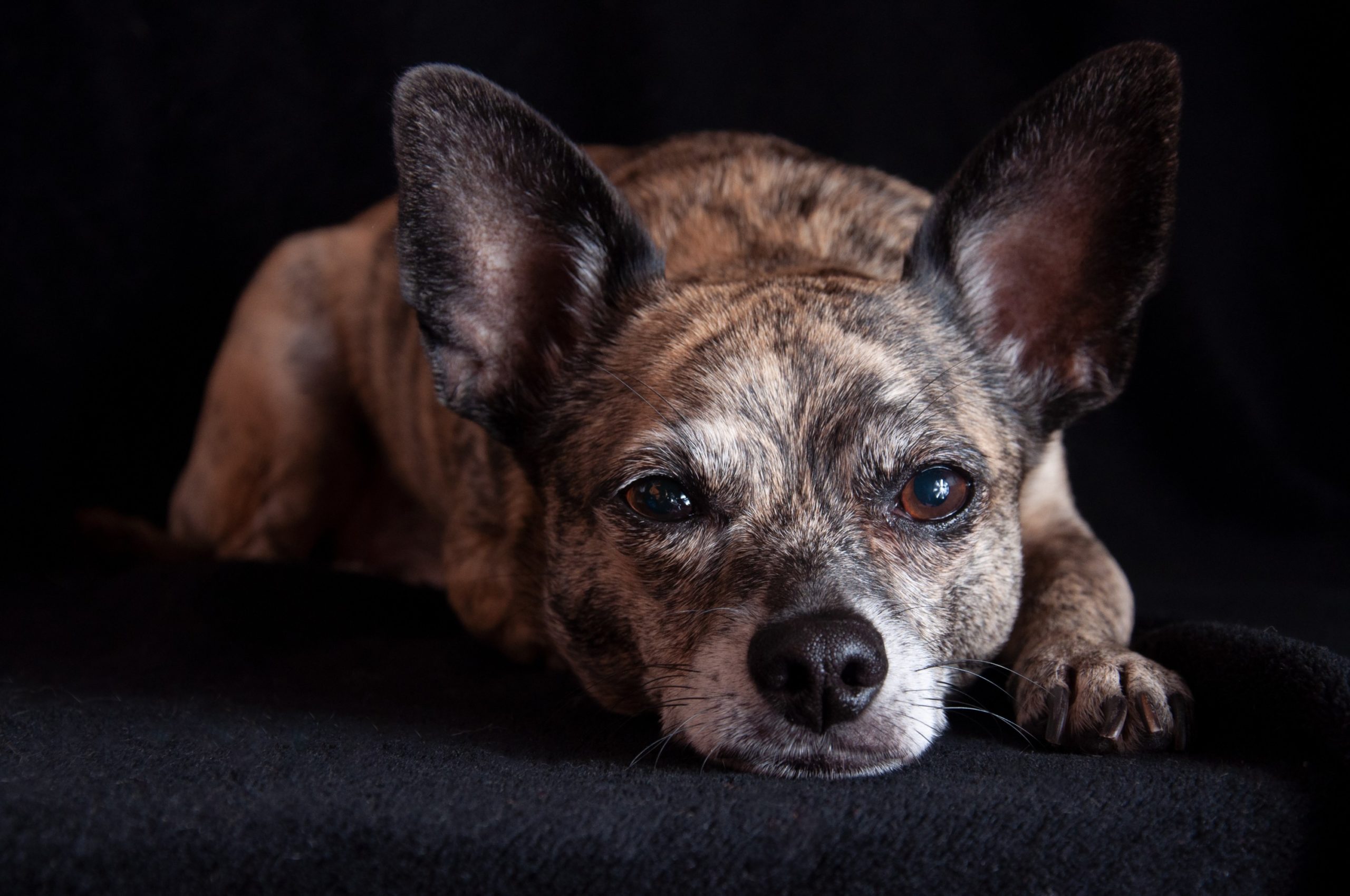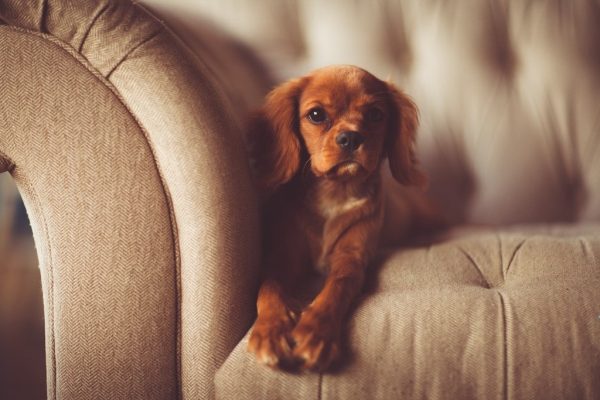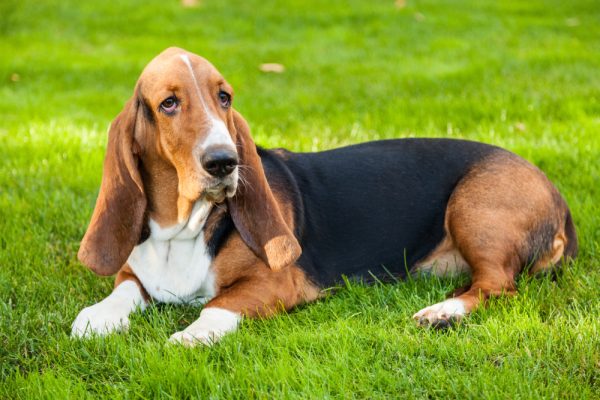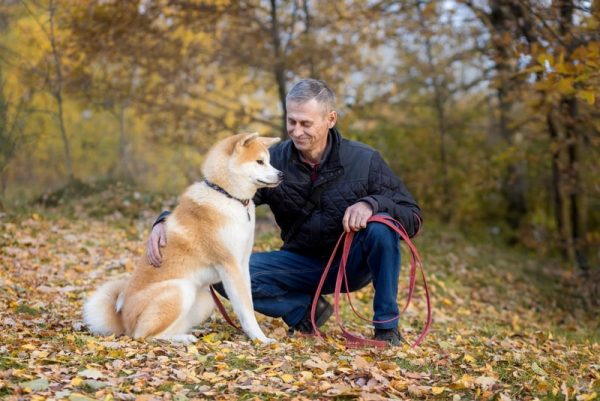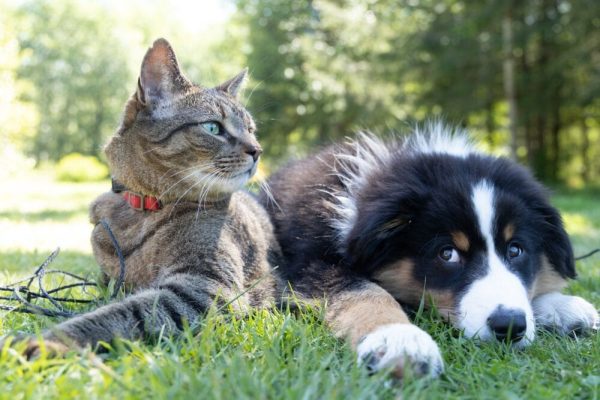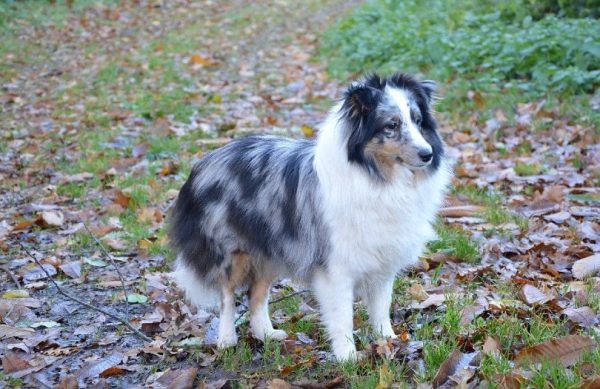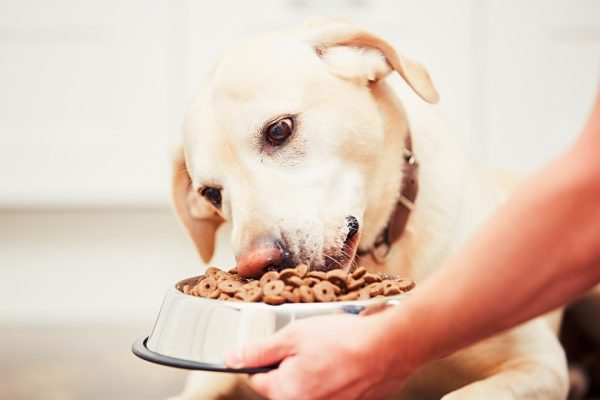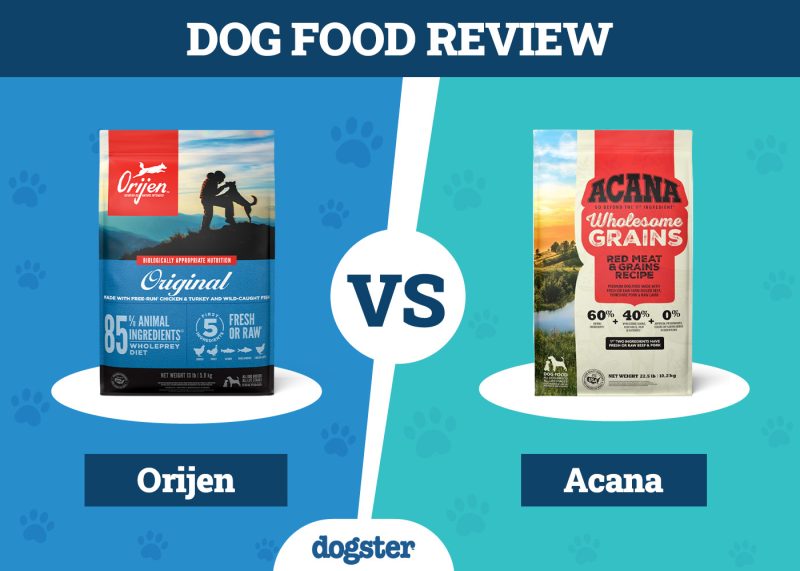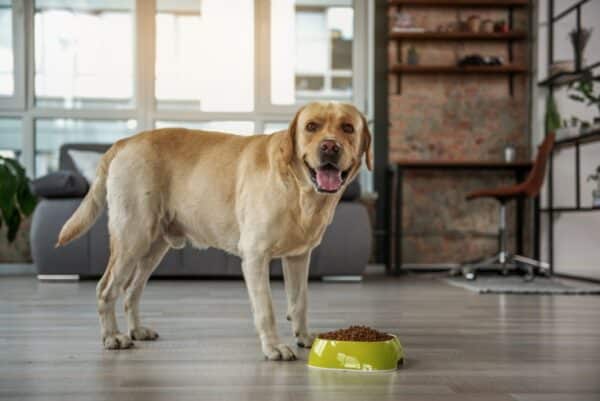In this article
View 8 More +The Italian Greyhuahua is a cross between a Chihuahua and an Italian Greyhound. These crossbreeds are generally rare within the United States, as Italian Greyhounds are hard to come by. Overall, these dogs are extreme versions of Chihuahuas. They are a bit more sensitive than their Italian Greyhound parent, making them warier of people and other animals. Their brilliant nature allows them to grasp commands easily, but they are also more likely to get into trouble. They need mental stimulation to stay happy.
Breed Overview
Height
10 – 14 inches
Weight
8 – 15 pounds
Lifespan
12 – 20 years
Colors
Varied
Suitable for
Active owners with plenty of time
Temperament
Aloof, hyperactive, intelligent
They are also quite a bit more energetic than a Chihuahua. Many people describe them as “more” Chihuahua for these reasons.
They look similar to Chihuahuas but often have the elegant silhouette of the Italian Greyhound. Of course, as a crossbreed, they can inherit any trait from either parent. Even dogs in the same litter can differ significantly. Some may take after their Chihuahua parent, while others may be more like Italian Greyhounds. You never know what you’re going to get when adopting one of these dogs.
Italian Greyhuahua Characteristics

Italian Greyhuahua Puppies
It’s challenging to find these dogs for sale in the U.S. They are not a popular mixed breed, so they are not often bred by professional breeders. Instead, most litters are accidental. However, since Italian Greyhounds are rare in most areas, accidental litters are even rarer. Plus, those who own Italian Greyhounds often purchase them from a breeder, so many are neutered or spayed at a young age.
For this reason, finding one of these dogs in your area is often just luck. You will likely have to travel quite a bit to acquire one, and there may not always be puppies available. However, when they are available, they aren’t that expensive.
Shelters and breed-specific rescues often have them as well and may be a better option. Rescue agencies usually give their dogs proper health care and are up front regarding any health problems that the dog may have. You can’t always be sure of this with private owners.
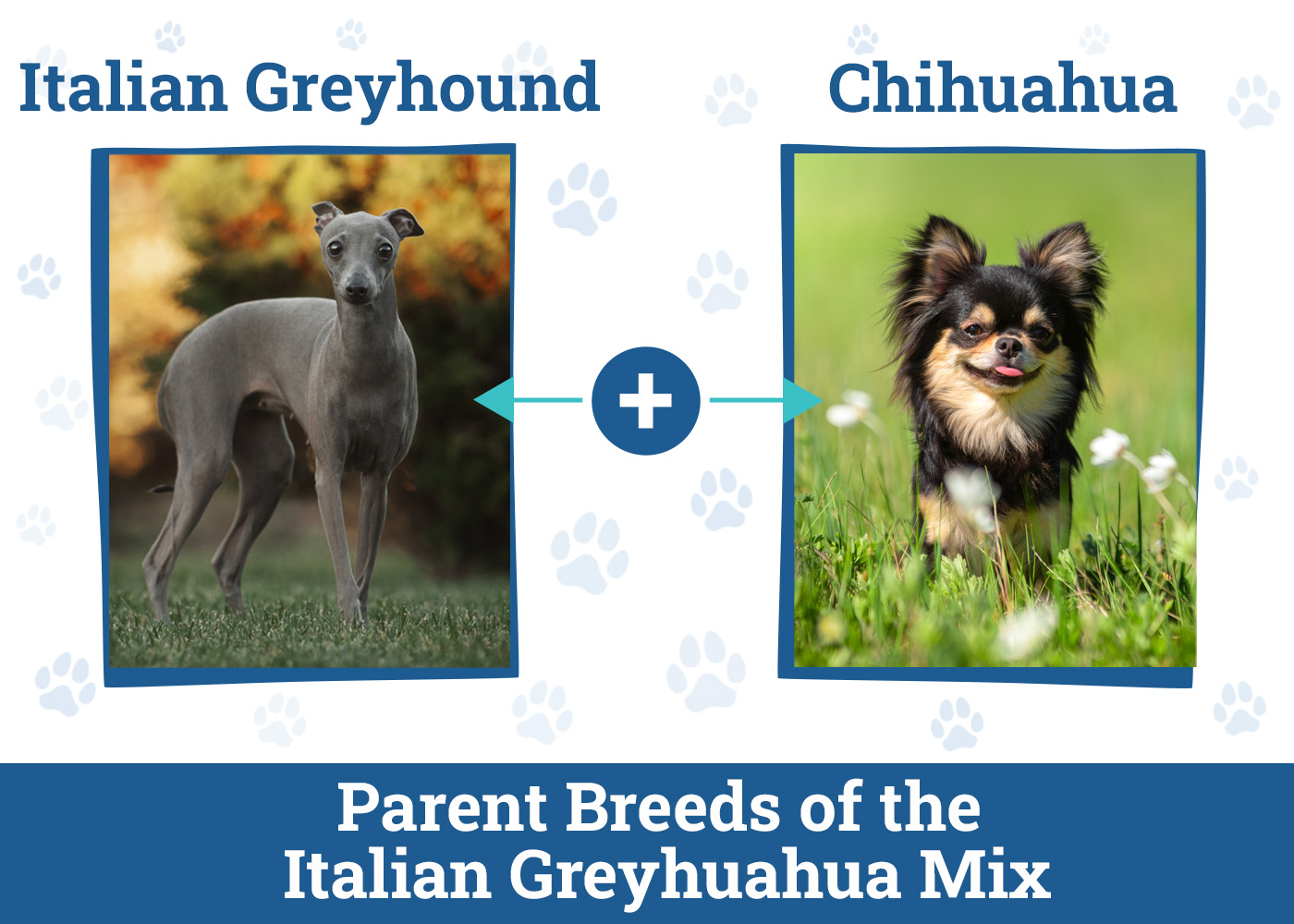
Temperament & Intelligence of the Italian Greyhuahua
These dogs are timid and aloof. They don’t like strangers and will typically hide or act aggressively around them. Early socialization is vital to improve their confidence, which can fix some of their automatic aloofness. Their small size makes them easy to scare, which can lead to aggression. Introduce them to many different people at a young age, and they will often learn to trust others.
With their family, they do tend to be quite playful around their family. They bond closely with one or two people, which may make them somewhat unsuitable for families. If you want a dog to bond with everyone in your family, this dog probably isn’t the best option for you. They are affectionate toward “their” people. They are highly devoted to their owners, though, and make excellent alert dogs.
They need quite a bit of mental stimulation to thrive. After all, they are intelligent and need regular entertainment. While they are small dogs, they can be destructive if left to their own devices. Obedience training, canine sports, and puzzle toys are all excellent options for this. It’s best to provide these dogs with regular mental stimulation to prevent destructive behaviors.
These dogs are often somewhere between the bravado of a Chihuahua and the submissiveness of the Italian Greyhound. How meek they are depends on what genes they inherit and how they are raised.
It’s vital to spend time with these dogs regularly. They thrive on human contact and are people-oriented. For this reason, they require regular affection and playtime. They aren’t the best dog to leave alone for many hours a day. Some are prone to separation anxiety, especially if they bond heavily with only one person. You will need to teach them how to stay alone when they are younger to prevent these problems when they reach adulthood.
Are These Dogs Good for Families?
It depends on the family. They are a bit more active than many other dogs, though they don’t necessarily need to exercise for long periods. Instead, short bursts of playtime are often more suitable. Families that are at least somewhat active are best for these dogs because they aren’t likely to lay around on the couch all day.
They also tend to bond heavily with only one or two people. Therefore, they aren’t necessarily best for larger families that want the dog to pay attention equally to everyone. They can be great for a family with one or two older children, but not for those with multiple active children.
Because of their small size, they can be easily injured by small children who do not handle them properly. They also tend to be more fearful of young children because they’re afraid of getting hurt. This can lead to fear-based aggression. We don’t recommend them for families with smaller children for this reason.
Does This Breed Get Along With Other Pets?
If socialized early, they can get along with other pets. They usually don’t have an extremely high prey drive. Socialize them with cats starting at an early age, and they will usually learn not to chase them. Of course, because this dog is a crossbreed, exactly how strong their desire to chase is will vary. Some may never get along with cats.
This dog can be a bit fearful of larger dogs. This often leads to biting and other aggressive behaviors. It is essential to socialize them with other reliable dogs at a young age to ensure that they have the confidence to hang out with other canines. If they learn that other dogs won’t hurt them, they will often be just fine.

Things to Know When Owning an Italian Greyhuahua
Food & Diet Requirements
These dogs don’t have any particular dietary requirements. They are small, so they don’t eat much. This fact makes it easier for most pet parents to afford more expensive, higher-quality foods, as their dog doesn’t eat as much of it.
We recommend foods that are high in meat. Look for formulas that have meat as the first ingredient. Whole meat and meat meals are preferable, as long as they are named. You don’t want to be feeding your dog literal “meat meal,” as it is the equivalent of mystery meat. However, “chicken meal” is often a decent option.
Grain-free foods are not necessary unless your dog has a specific allergy to grain. Grain-free foods do not usually contain more meat. Instead, the grain is switched with a low-quality veggie like peas or potatoes. While vegetables can offer nutrition in low amounts, they often become redundant when used excessively.
While what you feed these dogs doesn’t need to differ from your average canine, how you feed them does. They can be much smaller than most other canines, which means that they eat smaller amounts. Their stomachs aren’t big enough to hold much food. What they do eat gets digested quickly. When their stomachs are empty, their blood sugar will start to drop. This can lead to hypoglycemia, eventually leading to death if the dog is not fed again soon. Dogs will often start acting lethargic and may seem a bit disoriented. Then, they can begin having seizures and go unconscious. Eventually, they won’t wake up.
The smallest dogs in this breed need to be fed at least twice a day and more when they’re puppies. The larger dogs likely don’t have anything to worry about, though it is still best to feed them twice a day. If you don’t have the time to feed these dogs multiple times a day, you shouldn’t adopt them, or at least, you should invest in a timed feeder.
Exercise🦮
Thanks to their sighthound blood, the Italian Greyhuahua seems to be a bit more hyperactive than a regular Chihuahua. However, this doesn’t mean that they need extensive exercise. Due to their small size, small sessions of exercise are often best. A quick walk in the morning followed by a quick walk at night is often enough. If you’re home during the day, take them on another walk if they seem restless.
Like most breeds, they can be exercised through other means too. They enjoy games of all sorts, especially if it involves chasing things. Many are intelligent enough for canine sport, though that doesn’t mean they’ll listen to you when you ask them to perform a specific task. They probably will not win any competitions, but they may have fun training for a sport, like agility.
Try more complex games that are also active. Hide-and-seek can challenge them mentally and physically if you hide a short distance from where the dog is waiting. In the beginning, you may need two people to play this game. However, as the dog figures out the rules, they’ll learn to sit still while you hide.
Training🎾
The most important part of this dog’s training is their socialization. They tend to be unsure with strangers, children, and other dogs. The best way to combat this is to introduce many different people and animals at a young age. Puppy classes are nearly essential for this breed — not necessarily because they’re difficult to train, but because they need to meet other dogs in a safe environment.
Luckily, these dogs are small, so they aren’t difficult to take around with you. Starting from when they finish their puppy shots, take them to as many places as you can. Get them in new and exciting situations with new people and animals. Take them to the park. Visit families with well-behaved dogs. This will ensure that they aren’t so scared when they grow up.
When it comes to obedience training, these dogs can be rather tricky. Many will learn the commands during training time and then absolutely refuse to listen in other situations. They’re often angels at training but then seem like they didn’t learn a thing once they get home. The key is to train them in many different situations. Building up their attention is often difficult. They can also be quite stubborn.
Due to their smaller size, they are difficult to potty train. This is mainly because they need to go outside more often, not because they are inherently problematic. With such small bladders, they may need to go outside as often as every 30 minutes as puppies. Many owners use puppy pads or an alternative solution while their puppies are tiny.
Grooming ✂️
Because both parents have rather short fur, these dogs don’t require much grooming. The Italian Greyhuahua does shed, but not nearly as much as some other breeds. They should be brushed at least once a week with a slicker brush to remove hair, debris, and dirt. The brushing session will also spread out the dog’s natural oils, which are helpful for coat health and growth.
Unlike some breeds, these dogs usually don’t shed profusely during certain times of the year. They don’t have a “shedding season.” Therefore, most will shed a little year-round.
You shouldn’t bathe your dog unless they need it. Overbathing will strip the oils from their coat and make it easier for them to get dirty. Instead, you should only bathe them after they roll in mud or something smelly. If they are visibly dirty, they probably need a bath.
When the time does come for a bath, we recommend using a sensitive-skin shampoo to stay on the safe side. Some of these dogs are prone to skin and coat problems, which can be made worse by bathing. You can also use other products after the bath that can make bathing a bit gentler on your dog’s skin.
The Italian Greyhuahua does not need to visit the groomer unless you’re uncomfortable cutting your dog’s nails. They will need their nails clipped regularly. You can do this at home with the correct equipment, but many people would rather have it done by a groomer. Many groomers provide cheap, walk-in appointments for dogs that only need their nails clipped.
You should also keep an eye on your dog’s ears. While they aren’t prone to infection, they can get dirty and become infected. If they are dirty, clean them with a damp cotton ball.
Health and Conditions🏥
As a mixed breed, these dogs are quite healthy. They are less likely to inherit certain genetic conditions from their parents, as they inherit traits from a larger gene pool. However, they are prone to some conditions simply because of their smaller size.
Low blood sugar is one of these problems. This occurs when your dog’s blood sugar becomes too low. This primarily affects dogs at the smaller end of this breed. They have tiny stomachs that can’t hold much food. When their food has all been digested, their blood sugar will begin to drop. If they are not fed again within a short amount of time, they will start developing signs of low blood sugar. This condition can potentially lead to death if the dog is not fed and revived.
Patellar luxation is another disorder that these dogs are prone to. This involves the dislocation of the kneecap. The patella (kneecap) usually sits in a groove on the femur and slides around as the dog bends and unbends their leg. In some situations, the groove and kneecap may not line up, leading to the kneecap dislocation. This makes it painful for your dog to walk and can cause further damage if not corrected. The kneecap can rub up against things and damage muscle tissue.
This condition is genetic, but it can also be caused by trauma. Their kneecap can become knocked out of place by a physical injury, but it can also just slide out of place for no obvious reason.
- Patellar luxation
- Tracheal collapse
- Molera
- Hypoglycemia
- Skin diseases
Male vs Female
There is no significant difference between males and females of this breed. This mixed breed is so diverse that males often have little in common with other males. It would be challenging to find overarching differences between sexes simply because these dogs vary so much.

3 Little-Known Facts About the Italian Greyhuahua
1. They can be challenging to train.
While these dogs are often quite intelligent, that doesn’t necessarily mean that they are easy to train. Often, they can pick up on commands relatively quickly, but that doesn’t mean that they will listen to the commands. They are incredibly stubborn, so don’t let their high intelligence fool you.
2. Italian Greyhuahuas don’t act like they’re small.
Like Chihuahuas, these dogs often have huge personalities. They don’t know that they’re tiny and often act like they are much more significant. They are absolutely personality dogs.
3. These dogs come in many different colors.
Both their parents come in many different colors, which means that their puppies also come in many different colors. This is true even within the same litter.

Final Thoughts
The Italian Greyhuahua is a rare mixed breed. They vary greatly due to their large gene pool. Like most crossbreeds, you never know exactly what you’re getting with these dogs. They are often a bit unsure and aloof around strangers, so socialization is required. They can get along with other pets, but only if they are introduced to them at a young age. Some have high prey drives, which makes them incompatible with cats. Others get along with them fine, though.
Due to their high intelligence, these dogs require quite a bit of mental stimulation. They don’t necessarily train easily, despite their relatively high intelligence.
We mostly recommend this dog for families that have plenty of time on their hands. They are people-oriented and require quite a bit of attention. They aren’t suitable for working families that are gone for much of the day.
Featured Image Credit: Jes Abeita, Shutterstock
